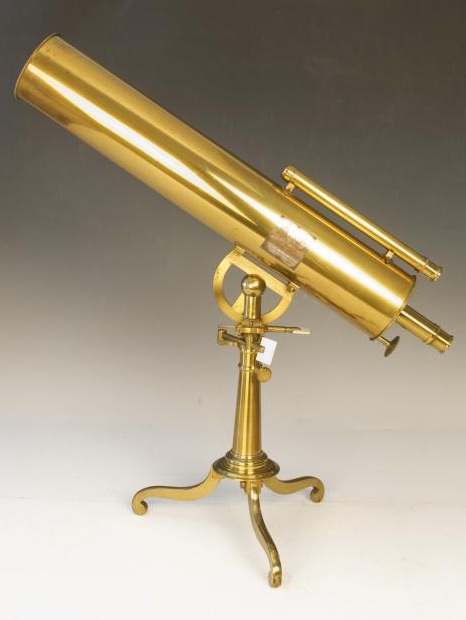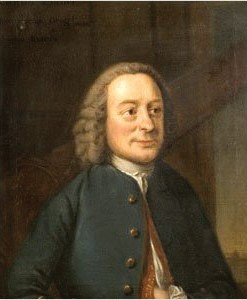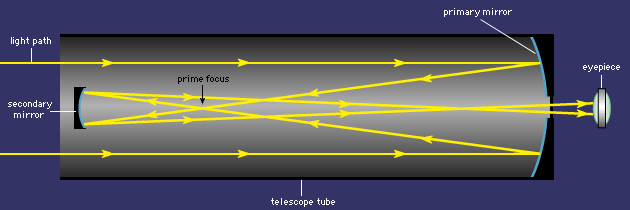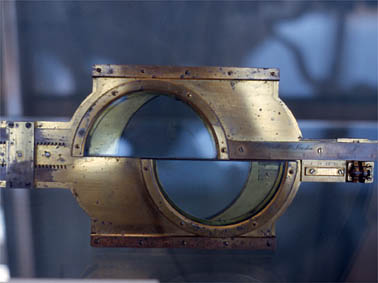 |
The James Short Gregorian Reflecting Telescope |
James Short (1710 - 1768)
 |
James Short became interested in mechanics and optics while studying at Edinburgh University. He settled in London in the 1730s and started manufacturing optical instruments. Short designed mirrors for Gregorian reflecting telescopes. He perfected the art of grinding and polishing difficult shapes. As this knowledge provided the source of his considerable success as a telescope maker, he never revealed how he was able to do so. During his career Short made about 1,370 telescopes for customers in Britain and overseas. His excellent instruments provided the standard of comparison for his contemporaries. Short compiled the observations of the ‘Transit of Venus’, when the planet passed in front of the Sun on June 6, 1761. His instruments travelled on Captain Cook’s ‘Endeavour’ to observe the next Transit of Venus on June 3, 1769, but Short died before this event took place. |
The Gregorian Reflector Telescope
James Gregory’s telescope design (1663) uses two concave mirrors - a primary parabolic-shaped mirror and a secondary elliptic-shaped mirror - to focus images in a short telescope tube. As indicated in the diagram below:
|
 |
Unlike a Newtonian reflector, where the image is brought to focus by moving the eyepiece, a Gregorian reflector brings an image to focus by moving the secondary mirror back and forth within the tube.
Speculum Metal Mirrors
Early telescope mirrors were made before the invention of technologies which could place a silvered mirror surface on glass and were instead made entirely from speculum metal, an alloy of approximately two-thirds copper and one-third tin.
After initial failures to construct mirrors of silvered glass, Short perfected the use of speculum metal and began producing parabolic telescope mirrors. Molten speculum metal was cast and then slowly cooled before being carefully ground and polished, a process that required a high level of patience and expertise.
Due to the impracticalities in using speculum metal, most 18th century astronomers prefered refracting telescopes. Speculum metal only reflected 66 percent of the light that hit it. Speculum metal also had the unfortunate property of tarnishing in open air, requiring constant re-polishing to maintain its usefulness. Telescopes mirrors had to be constantly removed, polished, and re-figured to the correct shape. Two or more mirrors had to be fabricated for each telescope so that one could be used while the other was being polished.
The Heliometer
 |
The Short telescope was used with a device called a Heliometer. A Heliometer measures the angular distance between two stellar objects. A Heliometer introduces a split element into a telescope’s optical path so as to produce a double image. In the Heliometer shown here, an objective lens is split in half; one half is fixed and the other is attached to a micrometer screw and slid along the cut diameter. For example, to measure the apparent separation between two nearby stars A and B, the micrometer is adjusted so that star A in one image touches star B in the other. Thus, precise angle measurements can be made. |
About Custer Institute’s James Short Gregorian Telescope
Custer’s James Short Gregorian Telescope is 24 inches in focal length. The primary mirror is 4-7/16 inches in diameter, made of speculum metal, and is concave paraboloid in shape. The secondary mirror is 61/64 inch in diameter, made of speculum metal, and is concave ellipsoid in shape.
Custer’s telescope is number 1284, of which 58 were made in the 24 inch focal length. It was donated to Custer by the late Dan Eichner, a member of Custer for many years and a maker of fine optical instruments, some of which are in display in the Elmer Room.
The Heliometer, also on display with the telescope, was most likely made by John Dolland, who was the premier manufacturer of refracting telescopes and optician to the King of England.
![]()
Related Sites
Amateur Observer's Society of NY
![]()
Technical Writer Home | Astronomy